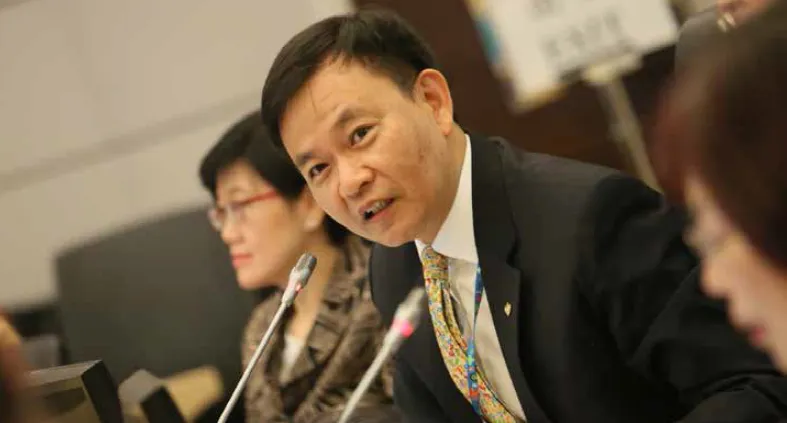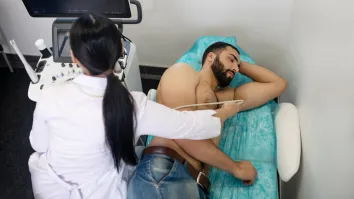
HK Hospital Authority bankrolls upgrades in 2015
Funds are in place for boosting manpower and developing facilities.
If Hong Kong expects to continue providing its citizens with quality public healthcare, the government must be able to quickly diagnose serious challenges moving forward, as well as administer a booster shot of reform initiatives as needed.
Central to solving Hong Kong’s public healthcare concerns is the Hong Kong Hospital Authority (HA), an independent and statutory body that takes care of the former British colony’s public hospital services.
“It offers medical treatment and rehabilitation services to patients through hospitals, day hospitals, specialist clinics, general out-patient clinics, Chinese medicine service, and community outreach services that are organised into seven clusters which together serve the whole of Hong Kong. Hong Kong citizens can enjoy subsidised medical services provided by HA,” the Hong Kong Special Administrative Region (SAR) government says on its website.
For many years, Hong Kong has prided itself on the quality of its healthcare system, catering to a broad segment of its population.
A quality system
Founded in 1990, a significant 90% of Hong Kong’s in-patient services are handled by HA, with 10% being covered by the private sector.
“Hong Kong has a quality healthcare system, supported by a team of highly professional healthcare workers. Our public and private medical sectors provide a full range of diversified services, including a low-cost public healthcare ‘safety net’ that ensures no one in Hong Kong is denied medical care due to a lack of means,”said Chief Executive Leung Chun-ying earlier this year.
An important indicator of Hong Kong’s top-notch public healthcare system is the life expectancy rates of the population. As of 2013, Hong Kong men and women were expected to live up to 81 and 87 years, respectively, according to the Hong Kong Special Administrative Region’s Census and Statistics Department.
“Both figures represented an increase of some nine years compared with 30 years ago. The life expectancy at birth in Hong Kong is comparable with those economies experiencing low mortality such as Japan and Sweden,” says HA.
Life expectancy happens to be one of the three main criteria of Bloomberg’s “Most Efficient Health Care 2014: Countries” listing, which last year named Hong Kong as the world’s second-most efficient healthcare system (second only to Singapore), with an efficiency score of 77.5, based on life expectancy, relative per capita cost of healthcare, and absolute per capita cost of healthcare.
In response, Dr Pak-yin Leung, HA Chief Executive, says: “We are running a highly efficient system. The efficiency means we are using a lot of money [to have] a good healthcare outcome. We are running emergency departments, heart transplants, kidney transplant services, and other major services.”
Healthcare cost per capita in Hong Kong rose by nearly 40% in 2014 versus 2013, reflecting accelerated spending for every Hong Kong citizen, according to Bloomberg. This, however, is only a miniscule portion of the country’s budget, based on last year’s government audit. For the years 2014-2015, HA spent about HKD 52 billion, or only about 2.5% of Hong Kong’s gross domestic product, according to Dr Leung.
Sustaining a good system
Nevertheless, Hong Kong’s healthcare budget is channelled toward a diverse set of reform-oriented goals. “We will seek to ensure the sustainability of our healthcare system through a series of reform measures, including the promotion of long-term development of primary care and Chinese medicine, proposed introduction of the Voluntary Health Insurance Scheme, revamp of the regulatory regime for private healthcare facilities, and implementation of the electronic health record programme,” the Policy Address states.
Meanwhile, while still remaining relatively low, HA’s budget is expected to expand by about 3.1% to 54 billion HKD for 2015-2016 in order to “meet the increasing demand for hospital services and to improve the quality of clinical care.”
Measures include installing 250 additional beds in five hospitals; widening indications of Special Drug for Multiple Sclerosis and introducing new drugs to the Drug Formulary to benefit 4,000 patients per year; performing around 5,300 additional endoscopic procedures; increasing the episodic quota for general outpatient clinics in five clusters by 55,000; setting up a 4th Joint Replacement Centre for 90 additional operations in 2015-2016, and for 250 additional operations per year moving forward; strengthening psychiatric teams’ manpower and crating a peer support element to the Case Management Programme for patients with severe mental illness; relocating Yan Chai Hospital’s Geriatric Day Rehabilitation Centre to a new wellness centre and doubling geriatric day places from 20 to 40 places; and conducting 3,000 additional visits to residential elderly care homes.
“We are going to have an increase in money mainly to improve, to have additional beds for our patients, and to improve acute services (stroke, cardiac, and renal),” Dr Leung explains, adding that there will also be an expansion of existing stroke treatment centres.
Better-equipped
Aside from direct medical facilities, HA will also bankroll the upgrade of its IT (information technology) systems in order to improve electronic clinical management and drug administration functions, alongside the creation of a larger general drug formulary.
“We need to put in about 200 million HKD to improve our IT system. Currently we are rolling out an inpatient medication ordering system. That means we can prescribe drugs in the ward through electronic means. This is going to help us a lot in terms of patient safety,” Dr Leung explains.
Accordingly, the larger drug formulary will also be supported with increased funding: “Each year we spend around 4 billion HKD on drugs. Next year, we are going to put more money, around 44 million HKD, into the drug formulary,” says Dr Leung.
Completing HA’s plans for 2015 are the delivery of new MRI (magnetic resonance imaging) and CT (computerized tomography) scan machines, in addition to the ones already in use, in order to meet demand for them, as well as speedier psychiatric services for children.
“Because we have a long waiting time for our child psychiatry, next year, we are going to put in more resources to reduce waiting time for child psychiatry patients,” says Dr Leung.
Such aggressive plans require adequate financial backing from the government, however — leading to concerns that perhaps current state subsidies may no longer be enough.
“Financially, we appreciate government support. Imagine: we charge only HKD 100 per day for in-patients,” says Dr Leung, noting that this amount, already heavily subsidised by the government, “includes everything — it’s a single fee,” for the patient.
Money is key
Without proper funding, typical challenges such as shortages in facilities and healthcare professionals may prove to be more difficult to meet head on.
For one, Hong Kong’s medical infrastructure, much of which has been around since the British administration, may no longer be on par with most modern standards. “Some hospitals are over 60 years old, so we need to have a development program and project for infrastructure,” says Dr Leung.
At present, Hong Kong manages 42 public hospitals and institutions, 47 specialist out-patient clinics and 73 general out-patient clinics, all organized into seven hospital clusters based on locations, namely Hong Kong West, Hong Kong East, Kowloon Central, Kowloon West, Kowloon East, New Territories East, and New Territories West.
“Hospital clusters ensure that patients receive a continuum of high quality care within the same geographical setting and throughout their episode of illness – from acute phase through convalescence, rehabilitation, and community after-care. This is achieved by rationalising operations of the hospitals within each cluster, so that a comprehensive and complementary range of services can be delivered to the community,” HA explains on its website.
According to Dr Leung, the current number of medical facilities in Hong Kong is expected to grow as the government has already earmarked a projected HKD100 billion in the next decade for the development and construction of major public hospitals.
“We are going to have one new hospital, the Hong Kong Children’s Hospital. It is expected to commence services in 2018. We [also] have one new hospital already built, and it has already started operations; this is called the North Lantau Hospital. We have another new hospital coming in 2016, the Tin Shui Wai Hospital, so that we can keep up with the need for in-patient services in terms of the ageing population and the need for facilities,” Dr Leung says.
For 2015-2016 alone, HA plans to spend an estimated HKD1 billion out of the HKD13 billion provision for minor works projects. The allocated sum, according to HA, will be directed toward the improvement and refurbishment of facilities found in public hospitals and clinics, such as the addition of hospital beds and other treatment and diagnostic facilities.
Losing manpower?
In addition to infrastructure issues, Hong Kong also seems to be facing a problem with the dwindling number of people working in its public hospitals in the years to come.
“Because of the demand for medical services, we are lacking healthcare professionals. We are lacking doctors,” Dr Leung laments.
The attractive compensation in the private sector seems to be enough of an incentive for Hong Kong’s public hospital doctors to leave in search of greener pastures. “We have a very good private sector, where doctors are earning more,” Dr Leung explains.
According to the latest data, HA employed 70,132 staff members, of which 5,910 were doctors, and 23,721 were nurses. The remaining were either allied health personnel or other staff, including management, support, and administrative staff. But these figures seem to be lagging behind the overall progress currently being made by Hong Kong’s healthcare sector.
“We need doctors and nurses. We are having new developments, new hospitals with more beds. There’s a lot of pressure here. With the hospital services we are providing, we don’t have enough doctors to fill in the vacancies. This is the challenge,” Dr Leung says.
Nevertheless, things are beginning to look up as Hong Kong welcomes more medical graduates next year. For one, Hong Kong’s local universities expect to produce more medical graduates in 2016.
“Recently, we have more new graduates coming in,” Dr Leung says, given that in a typical year, about 300 students graduate from Hong Kong’s medical schools. “Next year will be a better year, around 400,” he predicts – an increase of a third versus last year.
The forecast for the nursing industry in 2016 also appears to be equally optimistic. “Nurses are getting better, because we have better supply this year. This year, we have about 23,000 nurses, and each year we have a positive index. That means after filling in the vacancies, we still have sufficient nurses for new services,” Dr Leung says.
However, the issue regarding Hong Kong’s doctors appears to be more complicated, and HA is set on addressing a current shortage situation by stepping up its game in promotion procedures, and hiring back older hands. “We have more promotion strategies for doctors and nurses and supporting staff. We have a high attrition rate for supporting staff, so we’re going to improve their working conditions and terms of employment. We had measures for retaining our doctors by improving their promotion, and this year we are going to re-employ our retired doctors,” Dr Leung says, noting this would mean scrapping HA’s current retirement rule which mandates retirement at age 60.
“But now, after retirement, we give them a contract to re-employ them. We are introducing a full-time contract for retired doctors in the coming year,” Dr Leung says.
Aside from renewed full-time work, HA is also ready to offer part-time employment to its retired doctors.
“We have a very good part-time scheme, for doctors who may have left HA for private practice, or some who have retired. We have about 330 part-time doctors now,” says Dr Leung.
Ageing gracefully
Hong Kong’s struggles with its medical facilities and manpower represent typical challenges to any first-rate public healthcare system. However, Hong Kong is also beset with other issues unique to the island – that of a rapidly ageing population, and a looming threat of influenza affecting much of its senior citizens, especially during winter.
Much like Japan’s own demographic winter, Hong Kong’s ageing citizens pose serious challenges to its public healthcare system.
“People are getting older and when people are getting older, they need more healthcare services,” says Dr Leung. This is not to say that Hong Kong neglects its senior citizens. According to the Policy Address, “As Hong Kong turns rapidly into an ageing society, development of elderly care services has become even more important. In the face of the challenges brought about by an ageing population and the changes in the prevalence of diseases, we will uphold our commitment to providing quality and affordable public healthcare services. We will increase the capacity of the healthcare system on the one hand and enhance service quality on the other, through service and infrastructure development,” Dr Leung adds.
With the objectives of enabling senior citizens to live in dignity, with the necessary support for the promotion of a sense of belongingness, security, and worthiness, HA is committed to implementing concrete measures to uplift the health of Hong Kong’s elderly.
“We will continue to implement a host of measures and initiatives to enhance elderly care on all fronts. For the frail elderly, we strive to provide quality and cost-effective long-term care services in line with our policy of promoting ‘ageing in place as the core, institutional care as back-up.’ In this respect, we will strengthen and expand community and home care services whilst at the same time increase and enhance subsidised residential care services. We will also carry on with our efforts to provide support services for carers of the elderly,” the Policy Address says, outlining specific plans and initiatives for elderly healthcare services, ageing in place, long-term care services for the elderly, financial support for the elderly, and planning and integration of elderly services.
Seasonal woes
Aside from dealing with its elderly population, Hong Kong is also facing a potential threat in the form of the influenza virus, a seasonal threat made even deadlier when it hits the very old and the very young, especially because it is contagious.
“We have one more challenge. It’s about influenza,” says Dr Leung. Influenza research conducted in the past few months reveal more older people getting sick, thus more than doubling hospital admission rates in medical wards, to over 120% in some cases.
According to Hong Kong’s Centre for Health Protection (CHP), flu “season” in Hong Kong occurs from January to March, and again from July to August. The situation gets complicated, however, when a simple case of the flu escalates to pandemic proportions.
“Influenza pandemics occur roughly every 10 to 50 years, and may strike any time of the year,” CHP explains. “They are usually associated with a large number of cases, higher severity of illness, a higher death toll and consequently greater social and economic disruption.”
Incidentally, Hong Kong has had a dark history with the flu and flu-like pandemics: in the late 1960s and early 1970s, an estimated 1 million people worldwide died from the so-called Hong Kong flu, while in the early 2000s, it was SARS (Severe Acute Respiratory Syndrome) that took their toll on the global human population.
“Capacity is lacking in this area, especially during winter time. During that time, we need to mobilize our internal resources to give special allowances to our doctors and nurses who are working overtime and reschedule their whole working hours,” Dr Leung says.
Nevertheless, it seems Hong Kong is doubling up its efforts to combat influenza through CHP. A detailed preparedness plan outlining the government’s preparedness and response plan in case of an influenza pandemic has been uploaded to CHP’s website, while latest influenza updates are also posted on the site.



















 Advertise
Advertise





